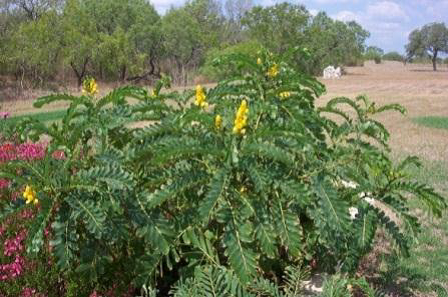Common Name: Candlestick plant (“Tree”)
Botanical Name: Cassia alata
Blooms: Beautiful golden spikes of bloom in the Fall
Height: from 6’ to 15’-great for the back of the flower bed
Light: Full sun
Heat tolerance: Very high
Water requirements: Medium
Propagation: Start from seed soaked overnight and planted
Outdoors in the spring after danger of frost has passed.
Deciduous shrub. In the warmer parts of Texas and along the Gulf Coast area the Candlestick tree will last for several years. They should be trimmed back after flowering to maintain compactness. May be root hardy under mild freezes unless the cold lasts longer than a day or two.
Botanical Name: Cassia alata
Blooms: Beautiful golden spikes of bloom in the Fall
Height: from 6’ to 15’-great for the back of the flower bed
Light: Full sun
Heat tolerance: Very high
Water requirements: Medium
Propagation: Start from seed soaked overnight and planted
Outdoors in the spring after danger of frost has passed.
Deciduous shrub. In the warmer parts of Texas and along the Gulf Coast area the Candlestick tree will last for several years. They should be trimmed back after flowering to maintain compactness. May be root hardy under mild freezes unless the cold lasts longer than a day or two.
